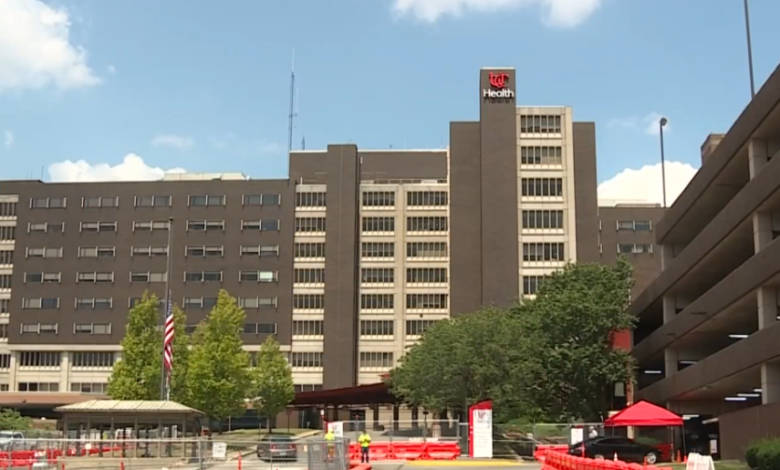

Doctors are working to determine what caused a Buffalo Bills football player to collapse after taking a hit during the Monday night game with the Cincinnati Bengals.Bills defensive player Damar Hamlin is being treated at the University of Cincinnati Medical Center, where experts are looking at all possibilities.“They’re looking at his coronary arteries, looking at his heart musculature, looking at his potential for arrhythmias and whatnot, and seeing if those are the predominant cause,” said the co-director of the sports cardiology center at Cleveland Clinic, Dr. Tamamna Singh. “That will dictate what the treatment strategy will be.”Singh said what happened during the hit is also a major factor. “Blows to the chest can also trigger abnormal heart rhythms that can cause cardiac arrest. So, there's a whole host of things that we want to evaluate before we kind of speculate what the cause was in this particular case,” Singh said.Among the most important part of the treatment was the attention given immediately on the field.Medical teams used an electronic device known as an AED.“What it stands for is an automated external defibrillator, meaning if you put the pads on and you don't need to be shocked, it's not going to call for a shock. So, it is truly automated,” said American Heart Association Alyson Poling.Poling said CPR compressions were also important to circulate oxygen to the brain. “As an adult, we have a lot of oxygen built up, but if nothing is circulating that oxygen, things will start to die off. So, truly what we call hands only or that compressions on the chest is first and foremost, especially in adults,” Poling said.
Doctors are working to determine what caused a Buffalo Bills football player to collapse after taking a hit during the Monday night game with the Cincinnati Bengals.
Bills defensive player Damar Hamlin is being treated at the University of Cincinnati Medical Center, where experts are looking at all possibilities.
“They’re looking at his coronary arteries, looking at his heart musculature, looking at his potential for arrhythmias and whatnot, and seeing if those are the predominant cause,” said the co-director of the sports cardiology center at Cleveland Clinic, Dr. Tamamna Singh. “That will dictate what the treatment strategy will be.”
Singh said what happened during the hit is also a major factor.
“Blows to the chest can also trigger abnormal heart rhythms that can cause cardiac arrest. So, there's a whole host of things that we want to evaluate before we kind of speculate what the cause was in this particular case,” Singh said.
Among the most important part of the treatment was the attention given immediately on the field.
Medical teams used an electronic device known as an AED.
“What it stands for is an automated external defibrillator, meaning if you put the pads on and you don't need to be shocked, it's not going to call for a shock. So, it is truly automated,” said American Heart Association Alyson Poling.
Poling said CPR compressions were also important to circulate oxygen to the brain.
“As an adult, we have a lot of oxygen built up, but if nothing is circulating that oxygen, things will start to die off. So, truly what we call hands only or that compressions on the chest is first and foremost, especially in adults,” Poling said.
Source link








